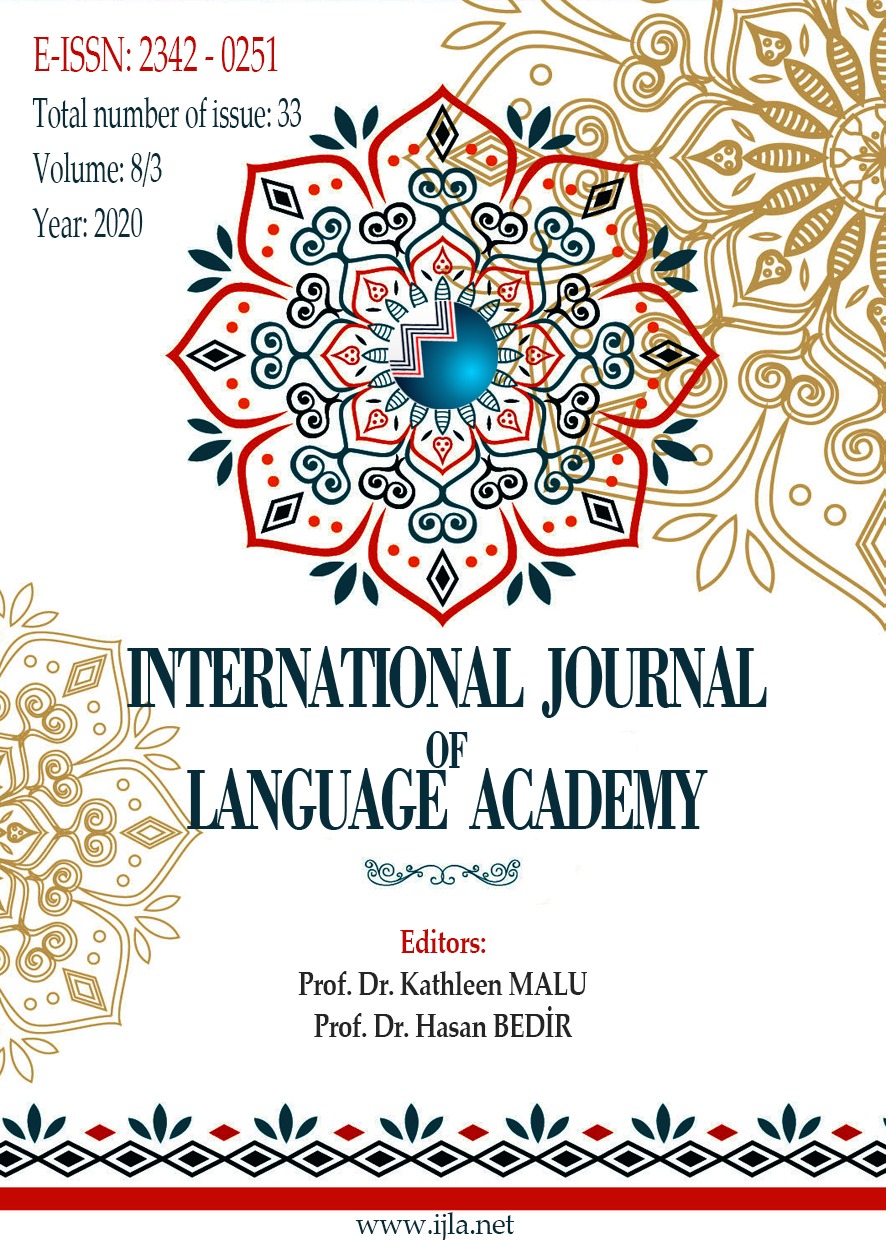Author :
Abstract
Çeviribilim alanında yapılan üst-eleştiriler çevirmenler için her zaman yönlendirici konumda olmuştur. Eleştiriler aracılığıyla hâkim olan çeviri anlayışlarını ve çevirmen özelliklerine dair bilgiler edinmek mümkündür. Bu makalenin amacı Mete Ergin ve Gani Yener tarafından hazırlanan ““Ve Durgun Akardı Don” adlı yanlış çeviri üzerine bir inceleme” başlıklı eleştiri kitabına dair bir üst- eleştiri incelemesi yapmaktır. Tektaş Ağaoğlu’nun çevirisine yapılan olumlu eleştirilere karşılık yazılan bu eleştiri kitabı keskin çizgilere sahip eleştiri başlıklarıyla oldukça dikkat çekicidir. İnceleme esnasında kitapta yer alan eleştiri başlıkları tek tek ele alınacak nasıl bir çeviri anlayışının hâkim olduğu ortaya çıkarılmaya çalışılacaktır. Aynı zamanda çeviri eleştirisinin yapıldığı dönemin baskın çeviri anlayışının ne olduğu çeviribilim alanında yapılan çeviri tarihi araştırmalarıyla irdelenecektir. Dönemin çeviri anlayışıyla eleştirmenlerin çeviri anlayışı karşılaştırılacaktır. Bu karşılaştırmanın üst eleştiri incelemesinde oldukça aydınlatıcı olacağı düşünülmektedir. Bu kapsamda çeviri eleştirisinin 1966 yılında yapıldığını göz önünde bulundurduğumuzda 1966 öncesi Türkiye’de çeviri tarihinde neler olduğuna bakmakta fayda vardır. Çalışmanın kuramsal çerçevesinde ise Van den Broeck’un “Second Thoughts on Translation Criticism: A Model of its Analytic Function” (1985) başlıklı makalesi esas alınacaktır. Sistemli ve nesnel bir çeviri eleştirisinin gerçekleştirilip gerçekleştirilmediği, eleştirmenlerin kendi normlarının çevirmenin normlarının önüne geçip geçmediğini tespit edilmeye çalışılacaktır. Çalışmanın sonuç bölümünde ise eleştiride tespit edilen eleştirmen normları ve çeviri anlayışıyla günümüz eleştiri normları ve çeviri anlayışı karşılaştırılacak aradaki farkın sebebi tartışılacaktır.Anahtar Sözcükler: Üst-Eleştiri, Eleştiri, Van den Broeck, Çeviri Tarihi
Keywords
Abstract
Meta-critiques in the field of translation studies have always been a guide for translators. It is possible to obtain information about the understanding of translation and the characteristics of the translator that prevails through critiques. The aim of this article is to make a meta-critique of the critique book titled “An analysis of the wrong translation named “ Ve Durgun Akardı Don ”” prepared by Mete Ergin and Gani Yener. The critique book, which was written in response to the positive criticism of the translation of Tektaş Ağaoğlu, is quite remarkable with its sharp headlines. During the meta-critique, titles in the critique book will be discussed on by one and it will be tried to reveal which understanding of translation is dominant. At the same time, the dominant translation understanding of the period in which the critique of translation was made will be examined with the translation history researches in the field of translation studies. The translation understanding of the period and the translation understanding of the critics will be compared. This comparison is thought to be quite enlightening in the meta-critique. In this context, considering that the critique was made in 1966, it will be beneficial to look at the history of translation before 1966. In the theoretical framework of the study, Van den Broeck's article titled “Second Thoughts on Translation Criticism: A Model of its Analytic Function” (1985) will be taken as basis. It will be tried to determine whether a systematic and objective translation criticism has been carried out, whether the critics' own norms outweigh the translator's norms. In the conclusion part of the study, the critics’ norms and translation understanding determined in the critique will be compared with the current criticism norms and the understanding of translation then the difference between them will be discussed.
Keywords
- Aksoy, B. (2008). Çeviri seçkisi I içinde “Cumhuriyet döneminde çeviri anlayışları”. Hazırlayan: Mehmet Rıfat. Sel Yayıncılık
- Bengi-Öner I. (1999). “Çeviri eleştirisi bağlamında eleştirel bilincin oluşması ve eleştiri, Üsteleştiri, Çeviribilim İlişkileri”. Çeviri bir süreçtir… ya çeviribilim? (1999) 111135. İstanbul.
- Broeck V. (1985). “Second thoughts on translation criticism: A model of its analytic function”. Ed. T. Hermans, The manipulation of literature: Studies in Literary Translation (1985) 54-62. London.
- Ergin, M., Yener, G. (1966) Ve durgun akardı don adlı yanlış çeviri üzerine bir inceleme. İstanbul: As Matbaası
- Gürçağlar, Ş. T. (2008). Çeviri seçkisi I içinde “tercüme bürosu nasıl doğdu”. Hazırlayan: Mehmet Rıfat. Sel Yayıncılık
- Gürçağlar, Ş. T. (2015). Kapılar, çeviri tarihine yaklaşımlar. İstanbul: Scala Yayıncılık
- Gürçağlar, Ş. T. (2018). Türkiye’de çevirinin politikası ve poetikası 1923-1960 (T. Demirel, Çev.). İstanbul: Türkiye İş Bankası Kültür Yayınları
- Sauer, J. (1997) “Türkiye’de ilk çeviri dergisi: tercüme”, (M. Çıkar, Çev), No:5/1997, 35-49
- Şolohov, M. (2016). Ve durgun akardı don-2. (T. Ağaoğlu, Çev.) İstanbul: Evrensel Basım Yayın
- Şolohov, M. (2018.) Durgun don, Cilt 2. (M. Ergin- G. Yener), Çev. İstanbul: Yordam Kitap
- Toury, G. (1995). Descriptive translation studies and beyond. Amsterdam: John Benjamins.
- Yücel, H.A. (1945). Ön söz. Tercüme. (19 Mayıs 1945) Maarif Vekilliği Neşriyat Müdürlüğü, Ankara: Maarif Matbaası
- Erişim tarihi:14.05.2020





